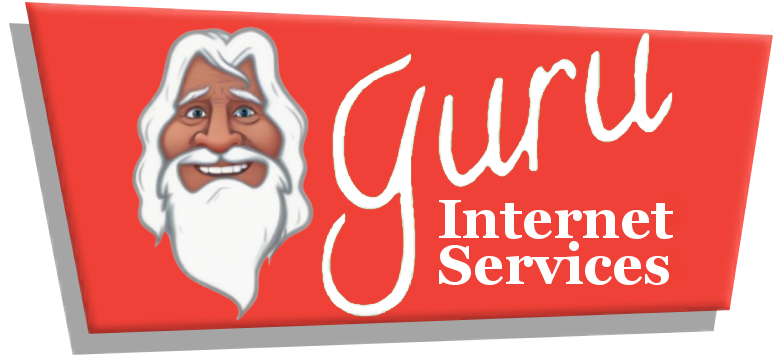
by Guru IS | Aug 3, 2024 | Website Design
In the evolving landscape of web development, performance is a critical factor that can make or break an application. This is where WebAssembly (Wasm) comes into play. WebAssembly is a binary instruction format for a stack-based virtual machine, designed as a portable compilation target for high-level languages like C, C++, and Rust. This means that it allows developers to run code written in these languages on the web, with near-native performance. This is a game-changer for web applications, enabling them to perform complex tasks with much greater speed and efficiency.
The introduction of WebAssembly has revolutionized how we approach web performance. By enabling the execution of high-performance code on web browsers, it bridges the gap between native applications and web applications. This leads to a more seamless user experience, where web apps can handle resource-intensive computations that were traditionally reserved for desktop software. As a result, businesses can offer more powerful and responsive web applications, enhancing user satisfaction and engagement.
If you’re looking to unlock the full potential of your web applications, now is the time to consider integrating WebAssembly. Ready to elevate your web performance? Get a quote from Guru Internet Services and see how our innovative web design and development solutions can drive real business success.
How WebAssembly Enhances Speed

One of the most compelling aspects of WebAssembly is its ability to significantly enhance the speed of web applications. Traditional JavaScript, while versatile, is often not the most efficient choice for performance-critical tasks. WebAssembly changes this by allowing developers to compile code written in languages like C, C++, and Rust directly into a binary format that can be executed at near-native speed by web browsers.
At the core of WebAssembly’s speed advantage is its binary format, which is much more compact than JavaScript. This compactness leads to faster download times and reduced parsing and compilation times. Additionally, WebAssembly’s design allows for more efficient execution and optimization by the browser’s JavaScript engines. This means that code can run much faster and more efficiently, making it ideal for performance-intensive applications such as games, video editing, and complex data visualizations.
Moreover, WebAssembly supports multithreading through Web Workers, enabling applications to better utilize multi-core processors. This is a significant improvement over JavaScript, which traditionally runs on a single thread. By leveraging multithreading, WebAssembly can distribute computational tasks across multiple cores, resulting in faster and more responsive applications.
In summary, WebAssembly’s ability to enhance speed comes from its efficient binary format, optimized execution, and support for multithreading. These features make it an invaluable tool for developers looking to create high-performance web applications that can handle demanding tasks with ease.
WebAssembly Versus JavaScript
When comparing WebAssembly and JavaScript, it’s essential to understand that they are not direct competitors but rather complementary technologies. Each has its unique strengths and ideal use cases, making them powerful tools when used together.
JavaScript has been the backbone of web development for decades, known for its flexibility and ease of use. It is interpreted by the browser, which makes it highly accessible and easy to debug. JavaScript excels in DOM manipulation, handling asynchronous operations, and creating interactive user interfaces. Its dynamic nature allows developers to quickly prototype and iterate on their code, making it ideal for most standard web applications.
WebAssembly, on the other hand, is designed for performance. It allows developers to write code in languages like C, C++, and Rust, which are then compiled into a binary format that can run at near-native speed in the browser. WebAssembly is particularly useful for performance-intensive tasks such as game development, video processing, and complex scientific computations. Its compact binary format also means faster load times and more efficient execution.
One of the key advantages of WebAssembly is its ability to work alongside JavaScript. Developers can use WebAssembly modules for performance-critical parts of their application while leveraging JavaScript for high-level logic and user interface interactions. This hybrid approach allows developers to optimize their applications for speed without sacrificing the flexibility and ease of use provided by JavaScript.
In essence, while JavaScript remains the go-to language for most web development tasks, WebAssembly offers a powerful alternative for scenarios where performance is paramount. By combining the strengths of both technologies, developers can create sophisticated, high-performance web applications that deliver an exceptional user experience.
Real-World Applications of WebAssembly

Since its introduction, WebAssembly has found its way into a variety of real-world applications, demonstrating its versatility and power in enhancing web performance. From gaming to machine learning, WebAssembly is transforming how developers approach performance-intensive tasks on the web.
One of the most prominent use cases of WebAssembly is in the realm of gaming. WebAssembly enables developers to bring complex, high-performance games to the browser, providing smooth and responsive gameplay that was previously only possible with native applications. Renowned game engines like Unity and Unreal Engine have embraced WebAssembly, allowing developers to compile their games into this format and run them efficiently in the browser.
Another significant application of WebAssembly is in the field of video and audio processing. Tools like FFMPEG, a powerful multimedia framework, have been ported to WebAssembly, enabling fast and efficient video and audio encoding, decoding, and processing directly in the browser. This capability is invaluable for web applications that require real-time media manipulation without relying on server-side processing.
Machine learning is yet another area where WebAssembly is making a substantial impact. Frameworks like TensorFlow.js leverage WebAssembly to perform complex mathematical computations in the browser at near-native speeds. This allows developers to build sophisticated machine learning models that run efficiently on client-side applications, enhancing user experience with real-time data processing and analytics.
In addition to these fields, WebAssembly is also being used in scientific computing, cryptography, and CAD applications. Its ability to run performance-critical code efficiently makes it a valuable tool for any application that demands high computational power and speed.
By harnessing the power of WebAssembly, developers can bring resource-intensive applications to the web, opening up new possibilities and delivering superior performance. As more industries recognize the benefits of this technology, we can expect to see an even broader range of applications leveraging WebAssembly to enhance web performance and user experience.
WebAssembly and Web Performance Metrics

Understanding the impact of WebAssembly on web performance requires a close look at key web performance metrics. These metrics help quantify the improvements brought by WebAssembly, providing a clear picture of how it enhances the user experience.
One critical metric is load time. WebAssembly can significantly reduce the time it takes for a web application to become interactive. By compiling code into a binary format that can be executed directly by the browser, WebAssembly eliminates the need for lengthy JavaScript parsing and interpretation phases. This results in faster load times and a more responsive application.
Another important metric is runtime performance. WebAssembly’s ability to run code at near-native speeds means that applications can perform complex computations more efficiently. This leads to smoother animations, quicker data processing, and overall enhanced performance. For example, applications that involve heavy mathematical calculations or real-time data analysis can benefit greatly from the improved runtime performance provided by WebAssembly.
Resource utilization is also a key metric to consider. WebAssembly’s optimized binary format allows for more efficient use of system resources, such as CPU and memory. This is particularly beneficial for applications running on devices with limited resources, such as mobile phones or IoT devices. By minimizing resource consumption, WebAssembly helps ensure that applications run smoothly even on less powerful hardware.
Additionally, latency is a crucial performance metric, especially for applications that require real-time interactions, such as online gaming or video conferencing. WebAssembly’s efficient execution model reduces latency, enabling faster response times and a more seamless user experience.
By evaluating these performance metrics, developers can clearly see the advantages of incorporating WebAssembly into their web applications. The combination of reduced load times, enhanced runtime performance, efficient resource utilization, and lower latency makes WebAssembly a powerful tool for achieving superior web performance. As more developers adopt this technology, we can expect to see a noticeable improvement in the speed and efficiency of web applications across various industries.
Future of WebAssembly in Web Development

As we look ahead, the future of WebAssembly in web development appears incredibly promising. This powerful technology is not only enhancing current web performance but also paving the way for innovations that were previously thought to be unattainable in the realm of web applications.
One of the most exciting prospects is the expansion of cross-platform capabilities. WebAssembly allows developers to write code once and deploy it across multiple platforms with minimal adjustments. This means that applications can run seamlessly on desktops, mobile devices, and even embedded systems, providing a unified experience for users regardless of the device they are using.
Moreover, WebAssembly is expected to play a significant role in the advancement of edge computing and IoT. Its ability to execute code with high efficiency on various devices makes it an ideal choice for processing data at the edge of the network. This can lead to faster data processing, reduced latency, and more responsive IoT applications.
Another area where WebAssembly is set to make a substantial impact is in gaming and virtual reality. The near-native performance of WebAssembly enables developers to create highly immersive and responsive gaming experiences directly in the browser. As VR and AR technologies continue to evolve, WebAssembly will be pivotal in delivering the performance required to support these resource-intensive applications.
Furthermore, the continuous development of WebAssembly itself is a testament to its potential. The community-driven evolution of the WebAssembly ecosystem ensures that it will keep pace with emerging web standards and technologies. Upcoming features such as threading support and improved debugging tools are expected to make WebAssembly even more versatile and developer-friendly.
In conclusion, the future of WebAssembly in web development is bright, with endless possibilities for enhancing application performance and expanding the boundaries of what is possible on the web. As businesses strive to deliver seamless and efficient digital experiences, WebAssembly stands out as a key technology that can drive significant advancements. Get a quote from Guru Internet Services today to explore how WebAssembly can revolutionize your web applications and provide your users with unparalleled performance and responsiveness.

by Guru IS | Aug 3, 2024 | Digital Marketing
In the ever-evolving world of digital advertising, staying ahead of the curve is crucial for businesses looking to make a significant impact. Two of the most exciting and innovative developments in the industry today are interactive ads and augmented reality (AR). These technologies are not just buzzwords; they are reshaping the way brands engage with their audiences.
Interactive ads offer a dynamic way for users to engage with content, creating a more immersive and personalized experience. Unlike traditional static ads, interactive ads encourage users to participate, click, swipe, or even play a mini-game, leading to higher engagement rates and a more memorable brand experience.
On the other hand, augmented reality brings a new dimension to digital advertising by overlaying digital information onto the real world. This technology allows consumers to visualize products in their own environment before making a purchase, bridging the gap between online and offline shopping experiences. From virtual try-ons to interactive 3D models, AR is making digital ads more engaging and effective.
At Guru Internet Services, we specialize in harnessing these emerging trends to create visually stunning and user-friendly websites that drive real business success. Get a quote at https://guru-is.com/#contact and see how we can revolutionize your digital advertising strategy.
The Rise of Interactive Ads

Interactive ads have emerged as a game-changer in the digital advertising landscape, significantly altering how brands connect with their audience. Unlike traditional ads that offer a passive experience, interactive ads engage users by encouraging them to take part in the ad experience. This engagement can range from clicking and swiping to answering questions or even playing mini-games, making the ad experience not only more enjoyable but also more memorable.
One of the key factors driving the rise of interactive ads is their ability to capture and hold user attention. In a world where consumers are bombarded with countless ads daily, standing out is essential. Interactive ads achieve this by offering a unique, engaging experience that piques user interest and encourages active participation. This not only increases engagement rates but also boosts brand recall and affinity.
Moreover, interactive ads provide valuable data and insights for advertisers. Every click, swipe, or interaction can be tracked and analyzed, offering a wealth of information about user preferences and behaviors. This data can then be used to refine and optimize future ad campaigns, making them even more effective.
From gamified ads to interactive videos and quizzes, the possibilities are endless. As technology continues to evolve, we can expect interactive ads to become even more sophisticated, offering richer and more immersive experiences. For businesses looking to stay ahead in the digital advertising game, embracing interactive ads is no longer optional—it’s essential.
Benefits of Interactive Advertising
Interactive advertising offers a multitude of benefits that make it an invaluable tool for modern marketers. One of the most significant advantages is the ability to create a more engaging and immersive experience for users. By actively involving the audience in the ad process, interactive ads can capture their attention more effectively than traditional static ads. This heightened level of engagement often translates to higher click-through rates and better overall campaign performance.
Enhanced user experience is another key benefit. Interactive ads are tailored to provide value and entertainment to the user, making the ad experience feel less intrusive and more enjoyable. This can lead to a positive perception of the brand and foster a stronger emotional connection with the audience. Additionally, users are more likely to share interactive content, thereby increasing its reach and impact.
Another noteworthy advantage is the rich data collection that interactive ads facilitate. Every user interaction—be it a click, swipe, or answer—generates valuable data points that can be analyzed to gain insights into consumer behavior and preferences. This data can then be used to tailor future marketing strategies, ensuring they are more targeted and effective.
Interactive advertising also offers greater flexibility and creativity compared to traditional formats. Marketers can experiment with various interactive elements such as quizzes, polls, and games to create unique and memorable experiences. This flexibility allows brands to differentiate themselves in a crowded market and stand out from the competition.
In summary, the benefits of interactive advertising are manifold. From enhanced user engagement and experience to valuable data insights and creative flexibility, interactive ads provide a powerful means to connect with the audience and drive business success.
Augmented Reality in Digital Ads

Augmented Reality (AR) is making significant strides in the realm of digital advertising, offering an immersive experience that goes beyond traditional ad formats. AR integrates digital information with the user’s environment in real-time, creating a blend of the physical and digital worlds. This innovation allows brands to provide more engaging and interactive content, capturing the audience’s attention in unprecedented ways.
One of the primary benefits of AR in digital advertising is its ability to create memorable and unique experiences. By allowing users to interact with products in a virtual space, brands can offer a hands-on experience without the need for a physical presence. For example, a furniture company can use AR to let customers visualize how a new sofa would look in their living room, enhancing the decision-making process and increasing the likelihood of purchase.
AR also provides a powerful tool for storytelling. Brands can craft compelling narratives that unfold in the user’s environment, making the ad experience more personal and engaging. This level of immersion can lead to higher engagement rates and a stronger emotional connection with the audience.
Moreover, AR ads are highly shareable, which can significantly extend their reach. Users are more likely to share their unique AR experiences on social media, generating organic buzz and increasing brand visibility. This virality can amplify the impact of the campaign, driving more traffic and potential conversions.
Another advantage of AR in digital ads is the rich data analytics it offers. Brands can track user interactions with AR elements, gaining insights into consumer preferences and behaviors. This data can inform future marketing strategies, making them more targeted and effective.
In conclusion, AR is revolutionizing digital advertising by providing immersive, interactive, and shareable experiences. Its ability to blend the digital with the physical world opens up new possibilities for brands to connect with their audience in meaningful ways.
Success Stories of AR Ads

Success stories of AR ads are becoming increasingly common as more brands harness the power of augmented reality to captivate their audience. These stories showcase the potential of AR to transform digital advertising and drive substantial business results.
One notable example is the IKEA Place app. Launched in 2017, the app allows users to virtually place furniture in their home using AR technology. This innovative approach to marketing has not only enhanced the shopping experience but also increased customer satisfaction and sales. By visualizing how products fit into their own space, customers feel more confident in their purchasing decisions.
Similarly, the beauty brand Sephora has leveraged AR with its Virtual Artist app. This app enables users to try on different makeup products virtually, eliminating the need for physical testers. The AR feature has been a hit among consumers, leading to higher engagement rates and boosting online sales. It has also provided valuable data on user preferences, helping Sephora tailor their offerings more effectively.
Another compelling success story is the AR campaign by Pepsi Max. During the ‘Unbelievable Bus Shelter’ campaign, Pepsi transformed an ordinary bus shelter into an extraordinary AR experience. Commuters were surprised with realistic animations like alien invasions and wild animals appearing in the shelter’s glass panel. This campaign generated significant social media buzz and showcased Pepsi Max’s innovative approach to advertising, leaving a lasting impression on the audience.
In the automotive industry, AR ads have also made a significant impact. Jaguar Land Rover’s AR app allows potential buyers to explore their vehicles in 3D, providing an immersive experience that goes beyond traditional brochures and videos. This interactive approach has led to increased user engagement and higher conversion rates.
These success stories demonstrate the transformative potential of AR in digital advertising. By creating memorable, interactive experiences, brands can engage their audience in meaningful ways, leading to increased brand loyalty and business success.
Future of Digital Advertising

The future of digital advertising is poised to be even more dynamic and personalized, driven by continuous advancements in technology. As we look ahead, several key trends are expected to shape the landscape, ensuring that advertisements become more engaging and relevant to consumers.
One major trend is the growing integration of artificial intelligence (AI) and machine learning. These technologies enable advertisers to analyze vast amounts of data to gain deeper insights into consumer behavior, preferences, and purchasing patterns. This allows for hyper-targeted campaigns that resonate more effectively with individual users, increasing the likelihood of conversions.
Furthermore, the rise of voice search will influence digital advertising strategies. With the proliferation of smart speakers and voice-activated assistants, brands will need to optimize their content for voice search to ensure visibility. This shift will necessitate a focus on conversational keywords and natural language processing to capture the growing segment of voice-driven searches.
Another exciting development is the continued evolution of programmatic advertising. Programmatic platforms use AI to automate the buying and selling of ads in real time, enhancing efficiency and precision. As these platforms become more sophisticated, they will offer better targeting capabilities, reduced ad wastage, and improved ROI for advertisers.
The use of immersive technologies like augmented reality (AR) and virtual reality (VR) is also set to expand. These technologies provide unique opportunities to create highly interactive and memorable ad experiences. As AR and VR become more accessible to consumers, their adoption in advertising will likely increase, offering brands new ways to engage their audience.
Lastly, the emphasis on privacy and data security will grow stronger. With increasing regulations and consumer awareness about data privacy, advertisers will need to adopt transparent practices and ensure that their data usage complies with legal standards. Building trust with consumers will be crucial for the success of future digital advertising efforts.
As the digital advertising landscape continues to evolve, staying ahead of these trends will be key for brands looking to maintain a competitive edge. At Guru Internet Services, we are committed to helping businesses navigate these changes and achieve absolute web success. Get a quote at https://guru-is.com/#contact to revolutionize your digital advertising strategy today!

by Guru IS | Aug 3, 2024 | Best Practices
Artificial Intelligence (AI) is no longer a concept relegated to the realms of science fiction; it is an integral part of our present and a critical component of our future. The advancements in AI technology have been nothing short of revolutionary, impacting various sectors such as healthcare, finance, education, and even entertainment. With its ability to process vast amounts of data and perform complex tasks with remarkable speed and accuracy, AI is poised to transform the way we live and work.
However, as we stand on the brink of this technological transformation, it is crucial to understand both the *opportunities* and *ethical dilemmas* that lie ahead. The future of AI promises unprecedented growth and innovation, but it also brings challenges that require careful consideration. How will AI reshape our industries? What are the ethical implications of deploying AI in everyday life? These are the questions that we must address as we navigate this exciting yet uncertain path.
At Guru Internet Services, we are committed to exploring the future of AI and providing insights that empower businesses to harness its potential responsibly. Get a quote today and let us help you achieve absolute web success!
Opportunities in Artificial Intelligence

The potential applications of Artificial Intelligence (AI) are vast and varied, offering numerous opportunities across different industries. One of the most significant advantages of AI is its ability to enhance efficiency and productivity. By automating repetitive tasks and optimizing workflows, AI can free up human resources to focus on more strategic and creative endeavors. This shift not only boosts productivity but also fosters innovation.
In the realm of healthcare, AI is making waves with its capabilities in diagnostics, personalized treatment plans, and even robotic surgery. Machine learning algorithms can analyze medical data to detect patterns and make accurate predictions, improving patient outcomes and reducing costs. Similarly, in finance, AI-driven systems are transforming the industry by providing real-time analytics, fraud detection, and personalized financial advice.
Moreover, the retail sector is leveraging AI to enhance customer experiences through personalized recommendations, chatbots, and efficient inventory management. In the education sector, AI is being used to develop adaptive learning platforms that cater to the unique needs of each student, making education more accessible and effective.
These examples merely scratch the surface of what AI can achieve. As the technology continues to evolve, the opportunities for innovation and growth are boundless. Companies that embrace AI stand to gain a competitive edge, driving success in an increasingly digital world.
Ethical Dilemmas in AI Development

As Artificial Intelligence (AI) continues to advance, it brings with it a host of ethical dilemmas that must be addressed. One of the most pressing issues is the potential for bias in AI algorithms. Since AI systems are trained on data sets, any biases present in the data can be perpetuated and even amplified by the AI, leading to unfair or discriminatory outcomes. This is particularly concerning in critical areas such as hiring practices, law enforcement, and healthcare, where biased decisions can have significant consequences.
Another ethical concern is the impact of AI on employment. While AI can enhance productivity and create new job opportunities, it also has the potential to displace a large number of workers. The automation of routine tasks could lead to job losses in sectors such as manufacturing, customer service, and transportation. This raises important questions about how society will support displaced workers and ensure that the benefits of AI are distributed equitably.
Privacy is yet another critical issue. AI systems often rely on vast amounts of personal data to function effectively. This data collection can infringe on individual privacy rights and expose sensitive information to potential misuse. Ensuring robust data protection measures and transparent data usage policies is essential to maintaining public trust in AI technologies.
Lastly, there is the question of accountability. When AI systems make decisions, it can be challenging to determine who is responsible for the outcomes. This lack of accountability can be particularly problematic in scenarios where AI decisions result in harm or adverse effects. Establishing clear guidelines and regulatory frameworks is crucial to address this issue and ensure that AI is developed and deployed responsibly.
Addressing these ethical dilemmas requires a collaborative effort from governments, industry leaders, and the broader public. By fostering open dialogue and developing robust ethical standards, we can harness the power of AI while mitigating its potential risks.
AI in Business and Society
The integration of Artificial Intelligence (AI) into business and society is transforming the way we live and work. In the business realm, AI is being leveraged to enhance efficiency, drive innovation, and gain a competitive edge. For instance, AI-powered analytics allow companies to gain deeper insights into consumer behavior, enabling more personalized marketing strategies and improved customer experiences. Additionally, AI-driven automation is streamlining operations, from supply chain management to customer service, reducing costs and increasing productivity.
In the financial sector, AI is revolutionizing tasks such as fraud detection, risk assessment, and algorithmic trading. By analyzing vast amounts of data in real-time, AI systems can identify suspicious activities and potential risks more accurately than traditional methods. This not only bolsters security but also helps financial institutions make more informed decisions and optimize their investment strategies.
AI’s impact extends beyond the business world and into broader society, where it is making significant contributions to healthcare, education, and public safety. In healthcare, AI technologies are being used to develop predictive models for disease outbreaks, assist in medical diagnoses, and even personalize treatment plans based on individual patient data. These advancements have the potential to improve patient outcomes and reduce healthcare costs.
In education, AI is being utilized to create adaptive learning platforms that provide personalized educational experiences for students. These platforms can identify a student’s strengths and weaknesses, offering customized learning paths that enhance understanding and retention of material. Moreover, AI-powered tools are assisting teachers by automating administrative tasks, allowing them to focus more on instruction and student engagement.
Public safety is another area where AI is making a difference. AI-driven surveillance systems can monitor and analyze vast amounts of data to detect and prevent criminal activities. Additionally, AI is being used to enhance disaster response efforts, from predicting natural disasters to optimizing resource allocation during emergencies.
Overall, the integration of AI into business and society holds immense potential for positive change. However, it is essential to address the associated ethical dilemmas and ensure that AI technologies are developed and deployed responsibly. By doing so, we can harness AI’s capabilities to foster innovation, enhance quality of life, and create a more equitable and efficient society.
Balancing Innovation and Ethics

As we forge ahead into the future of AI, one of the most pressing concerns is how to balance innovation with ethics. The rapid advancements in AI technologies bring about groundbreaking opportunities, but they also pose significant ethical dilemmas that must be carefully navigated. Striking the right balance is crucial to ensure that AI serves the public good without compromising ethical standards.
One of the primary ethical concerns is the potential for bias in AI systems. Since AI algorithms are often trained on historical data, there is a risk of perpetuating existing biases and inequalities. For example, biased data can lead to discriminatory practices in areas such as hiring, lending, and law enforcement. To mitigate this, it is vital to develop and implement fair and transparent AI models that actively identify and reduce biases. This includes diverse and inclusive data collection, as well as rigorous testing and auditing of AI systems.
Privacy is another critical issue. AI technologies often rely on vast amounts of personal data to function effectively, raising concerns about data security and individual privacy rights. It is essential to establish robust data protection frameworks that safeguard users’ information while allowing AI to operate efficiently. This involves clear data usage policies, anonymization techniques, and stringent regulatory compliance to prevent misuse of personal data.
The ethical use of AI also extends to accountability and transparency. As AI systems become more autonomous, determining responsibility for their actions can be challenging. Therefore, it is important to ensure that there are mechanisms in place to hold developers and users accountable for the outcomes of AI applications. This includes transparent decision-making processes, clear lines of responsibility, and the ability to explain AI-driven decisions to affected parties.
Moreover, the deployment of AI must consider societal impacts. There is a need to address concerns about job displacement due to automation and the potential widening of socio-economic disparities. Policies and initiatives that promote workforce retraining and education can help mitigate these impacts, ensuring that the benefits of AI are broadly shared across society.
Balancing innovation and ethics in AI is not a one-time effort but an ongoing process. It requires collaboration between technologists, ethicists, policymakers, and the public to develop frameworks that guide ethical AI development and deployment. By fostering a culture of responsible innovation, we can harness the transformative potential of AI while upholding the values and principles that underpin a fair and just society.
Conclusion: The Path Forward

The journey into the future of AI is laden with immense opportunities, but it is also fraught with ethical dilemmas that demand our vigilance and thoughtful action. As we navigate this complex landscape, the path forward must be guided by a commitment to both innovation and ethical responsibility. By addressing the challenges head-on, we can ensure that AI technologies contribute positively to society.
One of the keys to a successful AI future is continuous collaboration among various stakeholders, including technologists, ethicists, policymakers, and the general public. This collaborative approach fosters a comprehensive understanding of AI’s potential and its societal implications, enabling the development of balanced and effective policies. Engaging diverse perspectives ensures that AI systems are designed and deployed in ways that are inclusive and equitable.
Moreover, ongoing education and awareness are crucial. As AI continues to evolve, staying informed about its advancements and the ethical considerations they entail helps all stakeholders make better decisions. Initiatives that promote AI literacy among the public, as well as specialized training for professionals working with AI, can help bridge knowledge gaps and empower individuals to participate in meaningful discussions about AI’s future.
Investing in ethical AI research and development is another critical component. By prioritizing projects that focus on fairness, transparency, and accountability, we can build AI systems that not only excel in performance but also uphold ethical standards. This includes supporting interdisciplinary research that combines technical expertise with ethical insights to address complex challenges.
Ultimately, the path forward for AI is a collective effort. It requires a dedication to responsible innovation and a commitment to safeguarding human values. By fostering a culture of ethical AI development, we can unlock the transformative potential of AI while ensuring it aligns with the broader goals of society.
As we stand at the crossroads of technological advancement and ethical responsibility, now is the time to take decisive action. Let’s create a future where AI not only drives progress but also champions ethical principles. Get a quote at https://guru-is.com/#contact and let’s join hands in shaping an AI-driven world that benefits everyone.

by Guru IS | Aug 3, 2024 | Best Practices
The advent of the digital age has revolutionized the way we work, giving birth to a new era of remote work. The rise of remote work has been driven by advancements in technology, changing workforce demographics, and evolving employer expectations. This new work paradigm offers employees the flexibility to work from anywhere, fostering a better work-life balance and boosting overall job satisfaction.
While remote work offers a plethora of benefits, it also presents unique challenges that require effective strategies and tools to overcome. From maintaining communication and collaboration to ensuring productivity and security, remote work demands a rethinking of traditional workplace norms. The key to thriving in this environment is leveraging the right tools and adopting best practices for virtual collaboration.
At Guru Internet Services, we understand the importance of empowering businesses through innovative web solutions that support remote work. Our expertise in crafting visually stunning and user-friendly websites can help your business succeed in this evolving landscape. Get a quote today and let us take your business to the next level!
Benefits of Remote Work

Embracing remote work comes with a myriad of benefits that can significantly enhance both individual and organizational performance. One of the most compelling advantages is the improved work-life balance it offers. By eliminating the daily commute, employees can reclaim valuable time to spend with family, pursue hobbies, or simply rest, leading to higher levels of job satisfaction and overall well-being.
Another key benefit is the increased flexibility and autonomy that remote work provides. Employees have the freedom to design their work environment to best suit their needs, which can lead to enhanced productivity and creativity. Additionally, remote work opens up a wider talent pool for employers, allowing them to hire the best candidates regardless of geographical location.
From a financial perspective, remote work can lead to significant cost savings for both employees and employers. Employees can save money on commuting, work attire, and meals, while employers can reduce overhead costs associated with maintaining a physical office space. Moreover, the environmental impact is also noteworthy, as fewer commuters translate to reduced carbon emissions.
Lastly, remote work can drive better business continuity and resilience. In times of crisis, such as natural disasters or pandemics, having a remote work infrastructure in place allows businesses to maintain operations with minimal disruption, ensuring sustained productivity and service delivery.
Challenges of Virtual Collaboration

While remote work offers numerous advantages, it also presents distinct challenges, particularly when it comes to virtual collaboration. One of the primary obstacles is the lack of face-to-face interaction, which can lead to communication breakdowns. Without the benefit of non-verbal cues, such as body language and facial expressions, messages can be easily misunderstood, potentially causing conflicts and reducing team cohesion.
Another significant challenge is the feeling of isolation that remote workers may experience. The absence of casual office interactions and socializing opportunities can lead to a sense of loneliness and disconnection from the team. This can impact mental health and reduce overall job satisfaction, making it crucial for organizations to proactively foster a sense of community among remote employees.
Time zone differences also complicate virtual collaboration, especially for teams spread across different regions. Scheduling meetings and coordinating projects can become cumbersome, leading to delays and inefficiencies. It is essential for teams to establish clear communication protocols and utilize tools that facilitate asynchronous work to mitigate these issues.
Moreover, maintaining productivity can be challenging in a remote setting. Home environments may be filled with distractions, and without the structure of a traditional office, some employees might struggle to stay focused and motivated. Establishing a dedicated workspace and setting boundaries can help, but it requires discipline and self-management skills.
Lastly, cybersecurity concerns are amplified in remote work scenarios. Employees accessing company data from various locations and devices increases the risk of data breaches and cyber attacks. Organizations must implement robust security measures and provide training to ensure that all team members adhere to best practices for protecting sensitive information.
Essential Tools for Remote Teams

To overcome the challenges of remote work, equipping your team with the right tools is essential. These tools not only facilitate efficient communication but also enhance productivity and collaboration, ensuring that remote teams operate smoothly.
Communication tools are paramount for virtual collaboration. Platforms like Slack, Microsoft Teams, and Zoom enable instant messaging, video conferencing, and voice calls, helping team members stay connected and engaged. These tools also offer features such as file sharing and screen sharing, which are invaluable for collaborative work.
Project management tools are another critical component. Applications like Asana, Trello, and Monday.com allow teams to organize tasks, set deadlines, and track progress in real-time. These platforms provide a centralized space where everyone can view project updates, assign responsibilities, and manage workflows, reducing the risk of miscommunication and ensuring that projects stay on track.
Cloud storage solutions like Google Drive, Dropbox, and OneDrive are indispensable for remote teams. They provide secure, easy access to documents and files from any location, facilitating seamless collaboration. Team members can work on documents simultaneously, leave comments, and see changes in real-time, enhancing productivity and reducing the need for lengthy email chains.
Time management and productivity tools also play a crucial role. Tools like Toggl, Clockify, and RescueTime help remote workers keep track of their time, prioritize tasks, and stay focused. These tools can generate detailed reports on how time is spent, providing insights that can be used to improve efficiency and productivity.
Lastly, cybersecurity tools are essential to protect sensitive information. VPNs, antivirus software, and two-factor authentication systems ensure that remote access to company data is secure. Training employees on cybersecurity best practices is equally important to safeguard against potential threats.
By leveraging these essential tools, remote teams can navigate the complexities of virtual collaboration more effectively, enhancing both productivity and team cohesion.
Best Practices for Effective Communication

Effective communication is the backbone of a successful remote team. To ensure that your team remains productive and cohesive, it is crucial to follow best practices that facilitate clear and efficient communication.
Firstly, establishing regular check-ins is essential. These can be daily stand-ups, weekly team meetings, or one-on-one catch-ups. Regular check-ins provide a platform for team members to discuss progress, share updates, and address any challenges they are facing. Consistency in these meetings helps maintain alignment and fosters a sense of accountability.
Using the right communication channels for different types of messages is another best practice. For instance, instant messaging apps like Slack are ideal for quick questions and informal chats, while email is better suited for detailed updates or formal communications. Video calls should be used for discussions that require more context or when visual cues are important.
Encouraging open and transparent communication is vital for building trust within the team. Team members should feel comfortable sharing their thoughts, ideas, and concerns without fear of judgment. This can be achieved by creating an inclusive culture where everyone’s input is valued and by actively listening to each other during meetings.
Additionally, setting clear communication guidelines can help streamline interactions. These guidelines might include response time expectations, preferred communication tools, and protocols for scheduling meetings. Having a shared understanding of these guidelines can minimize miscommunications and ensure that everyone is on the same page.
Another important practice is to be mindful of time zones and schedules. When working with a distributed team, it is crucial to respect each other’s working hours and avoid scheduling meetings outside of these times. Tools like World Time Buddy can help find suitable meeting times that accommodate everyone’s time zones.
Finally, promoting regular feedback can significantly improve communication. Providing constructive feedback helps team members understand how they can improve and fosters a culture of continuous improvement. Encouraging feedback loops can also help identify and resolve any communication issues early on.
By implementing these best practices, remote teams can enhance their communication, leading to better collaboration and overall success.
Tips for Maintaining Productivity
Maintaining productivity in a remote work environment can be challenging, but with the right strategies, it is entirely achievable. Here are some tips to help you stay productive while working from home.
First, it is crucial to establish a dedicated workspace. Having a specific area for work helps create a boundary between your professional and personal life, making it easier to focus during work hours. Ensure that your workspace is comfortable, well-lit, and free from distractions.
Setting a consistent schedule is another key factor. Try to start and end your workday at the same time each day, and include regular breaks to avoid burnout. Using tools like time-tracking apps can help you monitor your work hours and ensure you are staying on track.
Utilizing task management tools can significantly boost your productivity. Applications like Trello, Asana, or Monday.com allow you to organize your tasks, set deadlines, and track your progress. These tools also facilitate collaboration with team members, ensuring that everyone is aligned.
Minimizing distractions is essential for maintaining productivity. Techniques such as the Pomodoro Technique, which involves working in focused intervals with short breaks, can help you stay on task. Additionally, consider using apps that block distracting websites or notifications during work hours.
Another important tip is to prioritize self-care. Taking care of your physical and mental well-being is crucial for sustained productivity. Incorporate regular exercise, healthy eating, and mindfulness practices into your daily routine. Ensuring you get enough sleep is also vital for maintaining focus and energy levels.
Communicating your availability to your team is also important. Letting your colleagues know your working hours and when you are available for meetings or discussions helps set clear expectations and reduces interruptions during your focused work time.
Lastly, regularly review and adjust your productivity strategies. What works for one person might not work for another, so it is important to find the methods that best suit your working style. Regularly assess your productivity levels and make adjustments as needed to stay efficient and effective.
By following these tips, you can enhance your productivity and achieve your work goals more efficiently. Empower your business with a website that drives real success. Get a quote at https://guru-is.com/#contact.

by Guru IS | Aug 3, 2024 | Digital Marketing
In today’s digital age, social media has evolved far beyond simple status updates and photo sharing. Businesses are increasingly recognizing the immense potential of social platforms as powerful tools for growth and engagement. However, while many companies understand the basics of social media, few have fully harnessed the advanced strategies that can drive significant business success.
As we move beyond the basics, it’s essential to focus on strategies that not only increase visibility but also foster authentic connections with your audience. Advanced social media strategies encompass a wide range of activities, from data-driven content creation and influencer partnerships to targeted ad campaigns and real-time engagement metrics. These approaches require a deeper understanding of your audience, meticulous planning, and a willingness to adapt to the ever-changing social landscape.
By leveraging these sophisticated tactics, businesses can unlock new opportunities for growth, improve customer loyalty, and achieve a competitive edge. Whether you’re looking to expand your reach, boost your brand’s reputation, or drive more conversions, diving into advanced social media strategies is a crucial step towards achieving your goals.
Ready to take your social media efforts to the next level? Get a quote and let us help you unlock the full potential of your social platforms.
Identifying Target Audience on Social Media
Understanding and identifying your target audience is a foundational step in any advanced social media strategy. Without clear insights into who your audience is, your efforts can quickly become misdirected, leading to wasted time and resources. Identifying your target audience on social media involves a combination of research, analysis, and continuous refinement.
Start by analyzing your existing customer base. Look at demographics such as age, gender, location, and interests, and use this data to create detailed buyer personas. These personas should represent your ideal customers and guide your content and engagement strategies.
Social media platforms themselves offer valuable tools for audience insights. For example, Facebook’s Audience Insights and Twitter Analytics can provide detailed information about the demographics and behaviors of your followers. Utilize these tools to gather more specific data and adjust your strategies accordingly.
Additionally, consider monitoring social conversations related to your industry. Tools like Hootsuite, Sprout Social, and Brandwatch allow you to track keywords and hashtags to see what topics resonate with your audience. This can help you identify trends and interests that you might not have been aware of.
Finally, don’t forget to engage with your audience directly. Conduct polls, surveys, and Q&A sessions to gather feedback and understand their needs and preferences. This ongoing dialogue can provide critical insights and help you refine your strategies for better alignment with your audience’s expectations.
Creating Engaging and Shareable Content

Once you have a clear understanding of your target audience, the next step is to focus on creating content that not only resonates with them but also encourages engagement and sharing. This is crucial for amplifying your brand’s reach and driving business growth through social media. Engaging and shareable content can significantly enhance your visibility and foster a community around your brand.
Start by ensuring that your content is relevant and valuable to your audience. Content that addresses their pain points, answers their questions, or entertains them is more likely to be shared. Use storytelling techniques to make your content more relatable and compelling. A good story can evoke emotions and create a deeper connection with your audience.
Visual content tends to perform better on social media. Incorporate high-quality images, infographics, and videos to make your posts more attractive. Platforms like Instagram and Pinterest are particularly visual-centric, but even on text-heavy platforms like Twitter and LinkedIn, visual elements can capture attention more effectively.
Interactive content is another powerful tool. Quizzes, polls, and interactive infographics can engage users more deeply and encourage them to share their results or opinions with their network. This not only increases engagement but also helps in spreading your content organically.
Don’t forget the importance of timing and frequency. Posting your content at times when your audience is most active can significantly boost engagement. Tools like Buffer and Hootsuite can help you schedule your posts for optimal times based on your audience’s activity patterns.
Finally, always include a clear call-to-action in your content. Whether it’s asking your audience to share their thoughts in the comments, tag a friend, or visit your website, a clear CTA can drive the desired actions and boost your content’s impact.
Leveraging Influencer Partnerships

In the realm of social media, influencer partnerships have become an invaluable strategy for businesses looking to expand their reach and build credibility. Influencers, who are individuals with a substantial and engaged following, can help amplify your brand message and connect with potential customers in a more authentic and impactful way.
To effectively leverage influencer partnerships, start by identifying influencers whose audience aligns with your target demographic. Look for influencers who share similar values and have a genuine interest in your industry or product. Tools like BuzzSumo and Social Blade can assist you in finding suitable influencers based on their engagement metrics and content relevance.
Once you have a shortlist of potential influencers, engage with them authentically. This means commenting on their posts, sharing their content, and starting a conversation. Building a relationship before proposing a partnership can increase the likelihood of a successful collaboration. When reaching out, be clear about what you hope to achieve and how the partnership could be mutually beneficial.
There are several ways to collaborate with influencers, including sponsored posts, product reviews, giveaways, and takeovers. Sponsored posts involve paying influencers to promote your product or service, while product reviews provide an opportunity for influencers to share their honest opinions. Giveaways can generate buzz and attract new followers, while takeovers—where influencers temporarily control your social media account—can offer fresh and engaging content.
It is essential to track the performance of your influencer partnerships to ensure they are delivering the desired results. Use analytics tools to measure engagement rates, follower growth, and conversions. This data will help you assess the effectiveness of the partnership and make informed decisions for future collaborations.
By strategically leveraging influencer partnerships, you can tap into new audiences, enhance your brand’s credibility, and drive meaningful engagement with your content.
Utilizing Analytics for Continuous Improvement

To unlock the full potential of your social media efforts, it’s crucial to utilize analytics for continuous improvement. Analytics provide invaluable insights into how your content performs, helping you make data-driven decisions to refine your strategy and achieve better results.
Start by setting up analytics tools on your social media platforms. Most major platforms, such as Facebook, Instagram, Twitter, and LinkedIn, offer built-in analytics dashboards. Additionally, third-party tools like Google Analytics, Hootsuite, and Sprout Social can provide more detailed and cross-platform analysis.
Focus on key performance indicators (KPIs) that align with your business goals. Common KPIs include engagement rates, follower growth, click-through rates, and conversion rates. These metrics will help you understand what type of content resonates with your audience and which strategies drive the most engagement and conversions.
Regularly review your analytics to identify trends and patterns. For instance, you might discover that posts published at certain times of the day receive higher engagement or that particular types of content—such as videos or infographics—perform better than others. Use this information to optimize your posting schedule and content mix.
Conduct A/B testing to experiment with different content formats, headlines, and calls-to-action. By comparing the performance of different versions of a post, you can determine which elements are most effective and refine your approach accordingly. A/B testing is a powerful way to continuously improve your content and maximize its impact.
Don’t forget to benchmark your performance against industry standards and competitors. This will help you set realistic goals and identify areas where you can gain a competitive edge. Tools like SocialBakers and Rival IQ can provide valuable benchmarking data.
By consistently utilizing analytics for continuous improvement, you can make informed decisions that enhance your social media strategy, increase engagement, and drive business growth.
Integrating Social Media with Other Marketing Channels

Integrating social media with other marketing channels is a strategic move that can amplify your overall marketing efforts and create a cohesive brand experience for your audience. By ensuring your social media activities are aligned with email marketing, content marketing, SEO, and paid advertising, you can maximize your reach and engagement.
Start by cross-promoting content across different platforms. For instance, share your latest blog posts on social media to drive traffic to your website, or use snippets from your email newsletters as engaging social media posts. This not only provides consistent messaging but also leverages the strengths of each channel to enhance visibility and interaction.
Email marketing and social media can work hand-in-hand to build and nurture your audience. Use social media to encourage followers to sign up for your email list by offering exclusive content or promotions. Conversely, include social media buttons in your emails to make it easy for subscribers to follow and share your content on their social networks.
SEO and social media integration is another powerful combination. Optimize your social media profiles and posts with relevant keywords to improve search engine rankings. Engaging content that gets shared frequently can boost your site’s domain authority and drive organic traffic. Tools like SEMrush and Ahrefs can help you identify effective keywords and track your social media impact on SEO.
Paid advertising on social media and other platforms can also be synchronized for better results. Use data from your social media campaigns to inform your ad targeting strategies on Google Ads or other PPC platforms. Retargeting ads can help you re-engage users who have interacted with your social media content but haven’t yet converted.
Integration also means consistent branding and messaging across all channels. Ensure that your visual and textual content aligns with your brand’s voice and aesthetics. This creates a seamless experience for your audience, regardless of where they encounter your brand.
By integrating social media with other marketing channels, you create a synergistic effect that enhances your overall marketing strategy, driving more significant results and fostering long-term growth. Get a quote at https://guru-is.com/#contact to discover how we can help you achieve absolute web success through innovative web design and integrated marketing strategies.


























